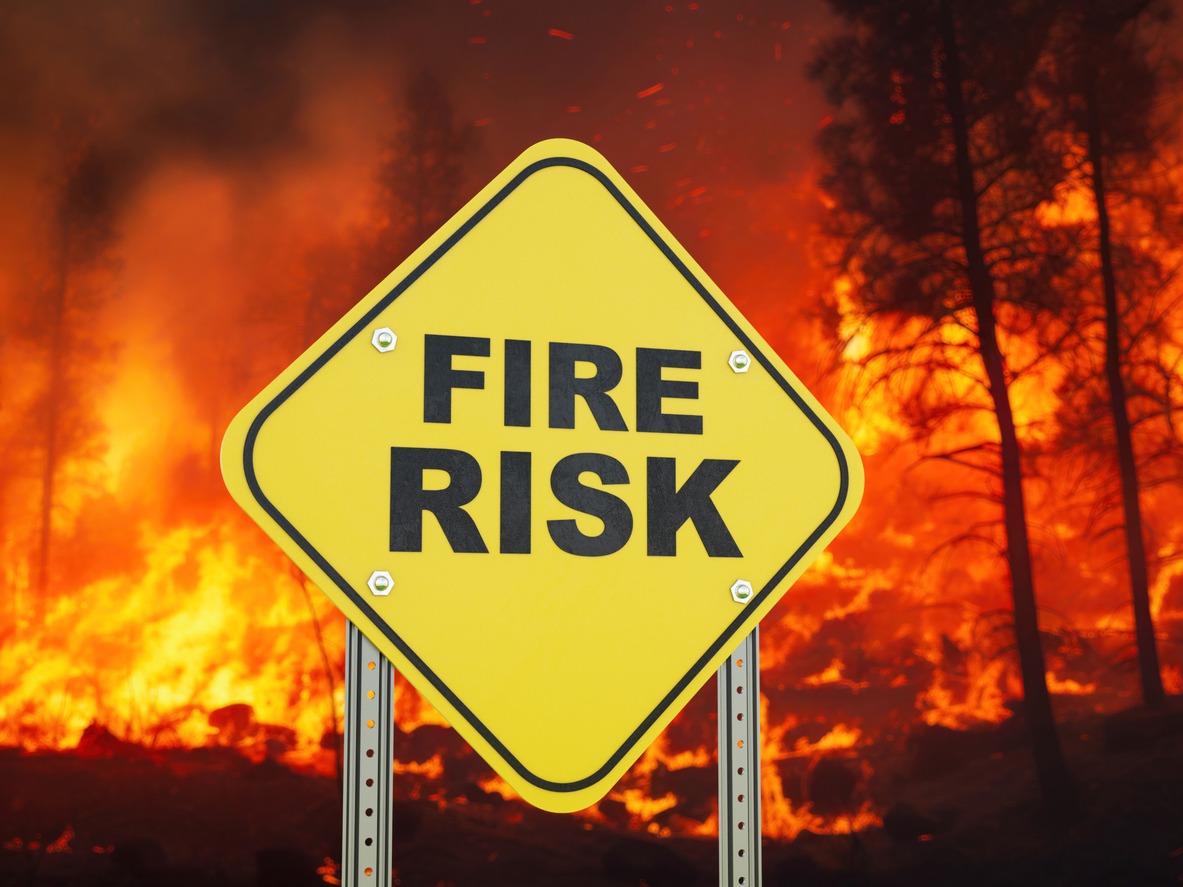It’s essential to understand any Protective Safeguard Endorsements in your property insurance policy because a failure to ensure those safeguards could result in an insurer denying your claim for a loss. But what are Protective Safeguards Endorsement? Read on to find out what they are, what they entail, and to discover a court case that hinged on ambiguity about the safeguards a policy required.
What Is a Protective Safeguards Endorsement?
Protective Safeguard Endorsements are specific provisions in a property insurance policy that require the policyholder to maintain certain safety measures as a condition for insurance coverage. These safeguards typically include fire or theft-prevention systems, like sprinkler systems, burglar alarms, locks, fire alarms, or security personnel. The endorsement is essentially a promise from the policyholder to keep these systems in working order, with the understanding that the insurer might not cover the losses if the specified safeguards aren’t in place.
These endorsements are designed to reduce the risk of damage to the insured property. By ensuring that protective measures are in place and functional, the likelihood of severe losses from events like fires or burglaries is minimized. Maintaining these safeguards can often lead to lower insurance premiums, as they reduce the risk the insurer has to bear. Failure to have or even maintain these safeguards can lead to significant consequences. If a loss occurs, and it’s discovered that the safeguard was not in place or operational, the insurer may deny the claim. Most policies require that the safeguard be in operation at all times but may provide a temporary exception when the insurer has been notified of the impairment.
What Are Some Examples of Security Safeguards?
Suppose you want to get personal property insurance coverage for your home and you have a collection of very expensive items (jewelry, a watch collection, some valuable works of art, etc.). Your personal property coverage may include a requirement that you keep the items in a safe, that you have burglar alarms, a security surveillance system for certain rooms, etc.
Common security safeguards to protect valuable physical assets include:
- Fences, gates, or other physical barriers
- Security guards or patrol services
- Security cameras and surveillance systems
- Fire alarms and sprinkler systems
- Locks, alarms, and access control systems (key cards, biometric scanners)
- Secure storage for sensitive documents and equipment
What Are Some Different Types of Security Safeguards?
In addition to physical safeguards, when it comes to businesses and commercial entities, security safeguards could also include technical and administrative safeguards such as:
- Firewalls and intrusion detection systems
- Antivirus and anti-malware software
- Strong password requirements and authentication mechanisms
- Data encryption
- Security policies and procedures
- Security awareness and training programs
- Risk assessments and mitigation plans
- Incident response plans
- Regular security audits and reviews
The Importance of Understanding Any Protective Safeguards Endorsements in Your Policy
If you own a business property, or you’re responsible for insuring an office or building you rent, your policy may require you to keep certain protective safeguards in place. That also means you bear the responsibility to maintain those safeguards, ensure they’re in proper working order, and notify the insurance company if there are any temporary gaps in the security provided by those safeguards, even if it’s just for routine maintenance. If a loss occurs and the policy requires a protective safeguard, the claims adjuster normally investigates to ensure the protective safeguards were operational at the time of the loss.
What Happens if a Protective Safeguards Endorsement Schedule Is Blank?
The typical protective safeguards endorsement refers to a schedule of the type of protective safeguards that are required. But what happens if the schedule is blank?
A recent decision, The Pointe Dallas v. Underwriters at Lloyd’s London, involved this situation.1 After the trial court ruled in favor of the insurance company, the policyholder made the following argument in their appellate brief about why the trial court was wrong:
First, it was erroneous because the PSE [Protective Safeguard Endorsement] – whose Schedule is completely blank and neither reflects nor incorporates any requirements set forth elsewhere in the Policy – does not mandate any protective safeguards whatsoever. Second, it was erroneous because the PSE is ambiguous in several respects and must therefore be construed in favor of coverage. At most, all that was required was a local alarm, and the summary judgment evidence demonstrates a fact issue with regard to whether The Pointe had one in place at the time of the loss.
The insurer argued that the schedule was not blank because the Protective Safeguard Endorsement Schedule referred to another schedule that identified the required safeguards.
The appellate court disagreed with the trial court’s decision and found for the policyholder. It should be noted that the appellate court noted that, when dealing with insurance contracts,
[t]he policy of strict construction against the insurer is especially strong when the court is dealing with exceptions and words of limitation.” Am. Nat’l Gen. Ins. Co. v. Ryan, 274 F.3d 319, 323 (5th Cir. 2001) (quoting Blaylock v. Am. Guar. Bank Liab. Ins. Co., 632 S.W.2d 719, 721 (Tex. 1982)).The appellate court then stated:
An insurance policy, like a contract, should be read as a whole. A review of The Pointe’s Policy as a whole reveals that at least some protective safeguards were required. At the bottom of the table, the PSE states, ‘[i]nformation required to complete this Schedule, if not shown above, will be shown in the Declarations or the Commercial Property Insurance Schedule.’ Then, the CPI Schedule requires the property to have P–2 and P–9 as protective safeguards. Given that the PSE directs the reader to the CPI Schedule, it is unreasonable for an insured—charged with knowing and understanding the terms of its policy—to fail to flip to that second document to see if anything is required. Further, the language at the bottom of the table (“if not shown above”) anticipates the table not being completed. And if protective safeguards were not required simply because the table in the PSE was not filled out, then the CPI Schedule would be made meaningless. The Pointe’s interpretation thus goes against the fundamental rule of contract construction, which mandates that no policy language be rendered superfluous. Looking at the Policy as a whole ‘in light of the circumstances present when the contract was entered,’ the empty table in the PSE does not establish that no safeguards are required. See id. Additionally, because this construction of the PSE is not reasonable, the Policy is not ambiguous on this basis.
The bottom line is that the appellate court found that the policyholder must go to the other schedule. Just because one schedule was blank was not enough to show ambiguity.
The winning argument for the policyholder was that the description in the other schedule created an ambiguity about what was required:
As to The Pointe’s construction, it was reasonable for The Pointe to consult the CPI Schedule to determine its responsibilities under the Policy. Underwriters themselves agree, earlier contending that it would have been unreasonable for The Pointe not to look to the CPI Schedule to find the Policy’s requirements, given the empty PSE table. The CPI Schedule requires The Pointe to maintain ‘P2 – Fire Alarm: Local.’ We give contract terms their plain, ordinary meaning… ‘Local’ means “having a definite spatial form or location” or ‘of, relating to, or characteristic of a particular place: not general or widespread.’ Local, Merriam–Webster Online Dictionary, http://www.merriam-webster.com/dictionary/local (last visited Nov. 15, 2023). We therefore interpret the plain language of ‘Fire Alarm: Local’ as requiring an alarm that sounded in the particular place that it alerted. This is a reasonable construction of the CPI Schedule’s language and the Policy’s overall requirements.
…
Because the Policy is ‘reasonably susceptible of more than one meaning,’ depending on whether the PSE or the CPI is given more weight, we conclude that it is ambiguous…. And because we must adopt ‘the construction that favors the insured,’ the district court’s grant of summary judgment was in error.
The Bottom Line
Protective Safeguard Endorsements are a critical part of property insurance policies aimed at minimizing risks through mandatory safety measures. For policyholders, especially in commercial settings, understanding and adhering to these endorsements is essential to ensure coverage in the event of a loss. To avoid a legal mess and denial of a claim, policyholders and those managing commercial property for policyholders must first place the required equipment into operation. Then, the protective measures must be maintained and regularly inspected to ensure they are operational. Inspection and testing is often the only way to ensure that coverage is not unknowingly being jeopardized.
Further Resources on Insurance Coverage Law
Navigating the complexities of insurance claims can feel overwhelming. Whether you’re facing unpaid claims or simply filing for the first time, our eBooks equip you with the crucial information you need to advocate for yourself with confidence.
- Filing A Property Insurance Claim
- Insurance Company Response Time
- What To Do When You Have a Denied/Underpaid Claim
- Wildfire Claims
- Flood Claims Handbook
- More Information on Hurricane Deductible and Policy Limits
- Condominium Hurricane Preparedness
Why Merlin?
Are you fighting an insurance company that won’t pay up on claims? With nearly 40 years of practice and $2 billion in recovered claims, our team stands by your side to ensure you can face any insurance challenge with confidence. Contact us today for a consultation, or read more about how we’re your trusted advocate.
__________
1 The Pointe Dallas v. Underwriters at Lloyd’s London, No. 22-11213 (5th Cir. Jan. 11, 2024).
A shout-out goes to James Willis and Melissa Wray for their excellent brief and advocacy for the policyholder.




